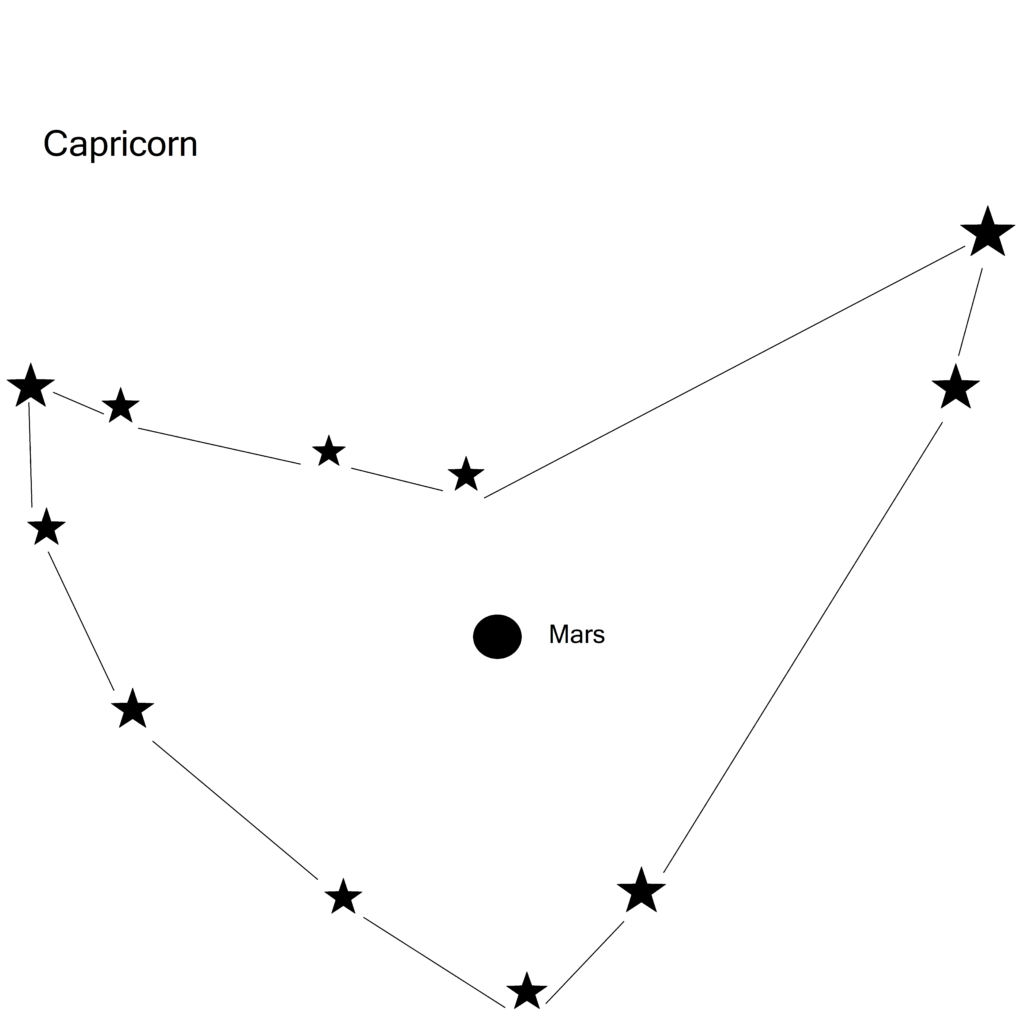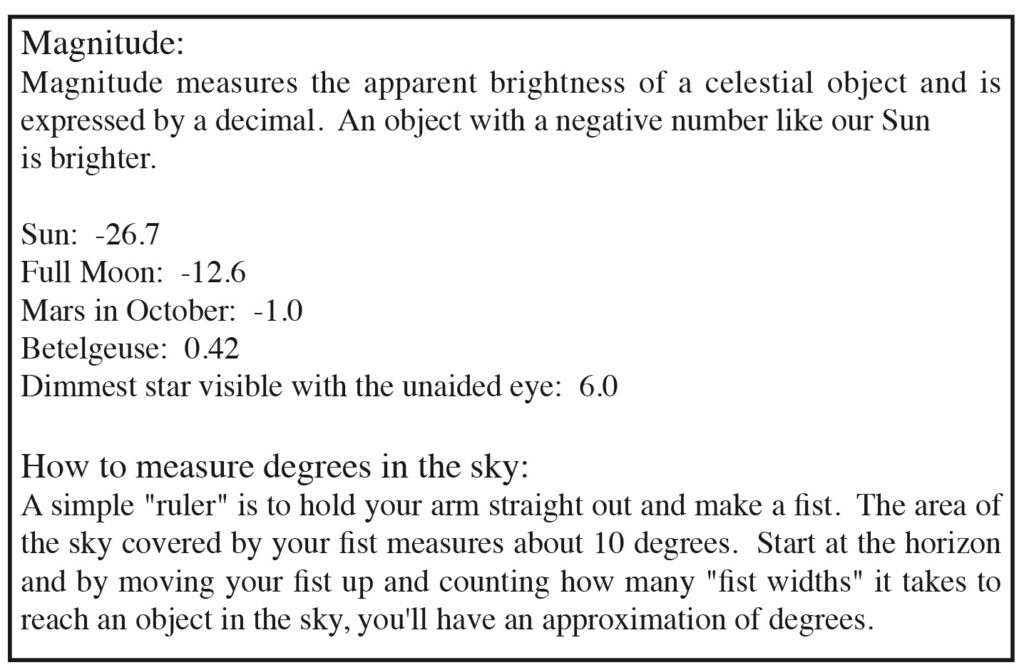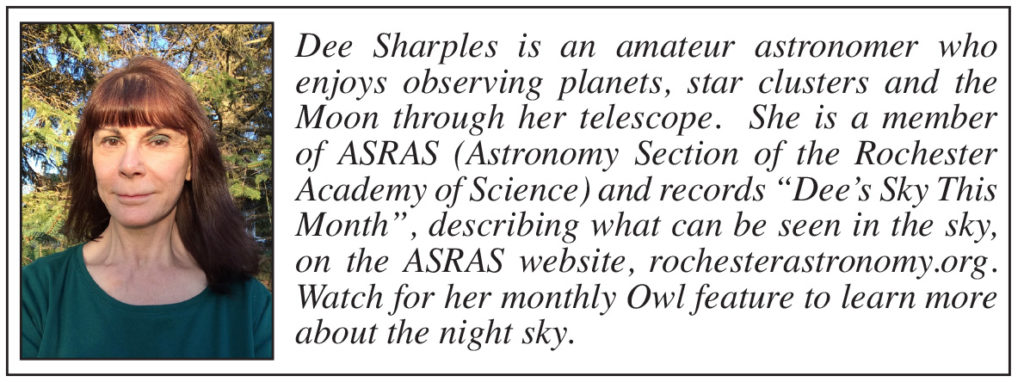The Night Sky: Capricorn constellation
by Dee Sharples –
Mars a beacon for locating Capricorn constellation
Autumn darkness makes for convenient viewing opportunities
 The planet Mars has been a highlight of the evening sky all summer and it still shines brightly in the south this month. Nicknamed the red planet, its red/orange color makes it easy to spot. At the beginning of the month look for it after darkness falls shining brightly at magnitude -1.3. By month’s end, it will have dimmed to magnitude -0.6 but it’s still brighter than any star visible in that area of the night sky.
The planet Mars has been a highlight of the evening sky all summer and it still shines brightly in the south this month. Nicknamed the red planet, its red/orange color makes it easy to spot. At the beginning of the month look for it after darkness falls shining brightly at magnitude -1.3. By month’s end, it will have dimmed to magnitude -0.6 but it’s still brighter than any star visible in that area of the night sky.
Mars lies one-third of the way up from the horizon in the constellation Capricorn. Capricorn is quite a dim constellation but because Mars will be an obvious beacon, October offers a great opportunity to find it. Mars spends the month within the confines of Capricorn and on October 15th at 10:00 pm, it will be almost centered within the constellation.
Two of the bright planets we have enjoyed viewing this past summer will soon disappear from the evening sky. Venus which is still brilliant at magnitude -4.8 will be gone by the second week of the month. Jupiter can still be found very low in the southwest sky looking like a bright star at magnitude -1.8 and will move lower with each passing week before it, too, disappears.
 Two meteor showers occur this month. The Orionid meteor shower peaks in the early morning hours of October 21st. The Moon sets around 4:00 am leaving two hours to see some meteors before the sky starts to brighten with the rising sun. The Orionids are active from October 2nd through November 7th but at the peak and under dark skies, you can see 20 meteors an hour which will appear to originate from the constellation Orion the Hunter.
Two meteor showers occur this month. The Orionid meteor shower peaks in the early morning hours of October 21st. The Moon sets around 4:00 am leaving two hours to see some meteors before the sky starts to brighten with the rising sun. The Orionids are active from October 2nd through November 7th but at the peak and under dark skies, you can see 20 meteors an hour which will appear to originate from the constellation Orion the Hunter.
Orion is a beautiful constellation easily recognized by the three bright stars equal distance apart that comprise his belt. Orion will be located high in the south in the early morning hours in October. Four stars form a large slightly distorted rectangle which represents his body – Betelgeuse, Bellatrix, Saiph and Rigel. The top star on the left of the rectangle will have a distinctly reddish hue compared to the other three white stars. This is Betelgeuse, a red supergiant star nearing the end of its life. If this star were our Sun, it would encompass our solar system all the way out to the planet Jupiter. It’s expected to explode as a supernova in the next million years. Check out this website (www.space.com/16659-constellation-orion.html) to see a star chart of Orion and find out more information about this stunning constellation.
The Draconid meteor shower may offer a better than usual show this year since its parent comet 21P/Giacobini-Zinner passed close to the Sun last month adding to the trail of dust and debris left behind from previous visits.
Normally a minor meteor shower, observers may experience an outburst at the peak starting about 10:00 pm on the night of October 8th and into the early morning hours of the 9th. In the past outbursts have occurred in the same year the comet paid us another visit. The meteors will appear to radiate from the constellation Draco the Dragon which can be found in the northern sky.
Now that it’s autumn, darkness is arriving earlier each day, but this means you can step outside and enjoy the beauty of the night sky at a more convenient hour.
